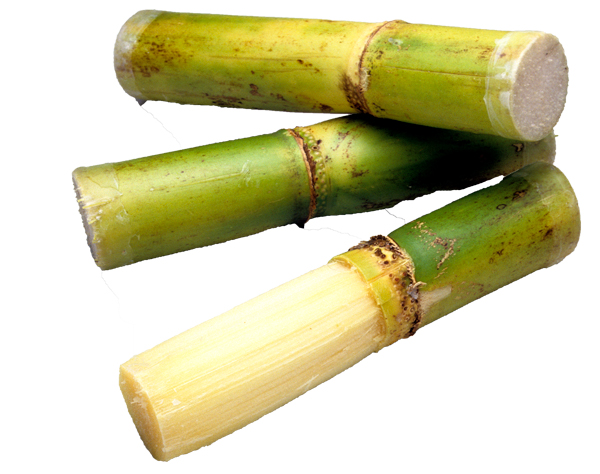How Sugar and Cane Are Processed for Use in Everyday Products
How Walking Cane Sugar Handling Chemicals Improve Sugar Quality and Yield
The duty of handling chemicals in cane sugar production is essential, as they directly affect both the high quality and yield of the last item. The unification of turned on carbon and enzymes serves to optimize the failure of complicated sugars, ultimately leading to a purer and higher-quality sugar.
Introduction of Walking Cane Sugar Processing
Cane sugar processing includes a collection of important actions that transform raw sugarcane into refined sugar items. The process begins with harvesting, where mature sugarcane stalks are reduced and moved to processing centers. Upon arrival, the cane undertakes cleaning to eliminate impurities such as soil and plant materials.
Complying with cleaning, the walking cane is crushed to extract the juice, which has sucrose - sugar and cane. This juice undergoes clarification, where lime and warm are made use of to remove remaining contaminations and non-sugar elements. The made clear juice is after that evaporated to concentrate the sugar content, leading to the formation of thick syrup
Next, the syrup is taken shape through a regulated air conditioning procedure, leading to sugar crystals. These crystals are divided from the remaining syrup in centrifuges. The raw sugar acquired is generally brown because of residual molasses content. To accomplish polished sugar, additional purification steps are used, including cleaning, re-crystallization, and drying out.
The end product is either packaged as raw sugar or better refined into white sugar, dealing with numerous consumer and industrial demands. This thorough collection of actions ensures the manufacturing of premium sugar, essential for countless applications in food and beverage markets.
Secret Processing Chemicals Utilized
The production of polished walking cane sugar counts on different handling chemicals that play substantial roles at various phases. This action is essential for enhancing the total high quality of the drawn out juice.
Phosphoric acid serves a double function; it improves the information procedure and helps in the elimination of color-forming compounds, adding to a greater purity of the end product. In addition, sulfur dioxide works as a lightening representative, permitting the effective elimination of unwanted pigments and enhancing the color of the sugar.
Other remarkable chemicals include activated carbon, which is utilized for additional decolorization, and enzymes that facilitate the failure of intricate sugars right into less complex kinds, thus improving return. The cautious selection and application of these processing chemicals are essential for maximizing the efficiency of sugar extraction and refining procedures, eventually resulting in a more consistent and greater top quality sugar item.

Impact on Sugar High Quality
How do handling chemicals influence the high quality of polished sugar? The introduction of different chemicals in the cane sugar processing stage considerably enhances the purity and overall high quality of the last item.
In addition, the usage of activated carbon and ion-exchange materials during the refining procedure plays a crucial role in removing off-flavors and unfavorable smells, adding to the sugar's sensory profile. This refinement not only boosts the organoleptic and aesthetic qualities however also improves the service life by decreasing microbial task connected with contaminations.
On top of that, the specific application of these chemicals ensures that the sugar exhibits a consistent grain size and flowability, which are necessary attributes for both commercial applications and customer preferences. Generally, the calculated use handling chemicals is fundamental in achieving top quality refined sugar that meets industry criteria and consumer assumptions.

Enhancing Return Performance
Enhancing yield effectiveness in cane sugar handling entails optimizing different stages of manufacturing to maximize the quantity of sugar drawn out from raw cane. One vital facet is the visit their website choice and application of proper processing chemicals, which can facilitate the failure of cell wall surfaces and boost sugar release throughout removal. Chemicals such as acids and enzymes play an essential function in this process by hydrolyzing polysaccharides and dissolving pollutants, therefore boosting the total removal effectiveness.

Normal monitoring and change of processing criteria are vital to maintain performance throughout manufacturing (sugar and cane). By utilizing these approaches, sugar manufacturers can not just raise the amount of sugar obtained yet also reduce waste and lower production prices, adding to an extra lucrative and lasting sugar processing operation
Advantages for Producers and Customers
Walking stick sugar handling chemicals provide significant benefits for both consumers and manufacturers, developing an extra sustainable and reliable industry. For producers, these chemicals improve extraction procedures, leading to greater yields and improved sugar high quality. By optimizing the purification and condensation phases, they lower waste and increase general productivity, which can dramatically lower production expenses. This efficiency permits producers to stay competitive in a global market characterized by fluctuating prices and demand.
The better top quality of sugar translates to much better taste and uniformity in food products. In addition, the use of handling chemicals can lead to a much more secure supply of sugar, alleviating shortages and rate spikes that can take place due to environmental aspects or market variations.
Final Thought

The role of processing chemicals in walking cane sugar production is critical, as they directly affect both the high quality and return of the last item (sugar and cane). The incorporation of activated carbon and enzymes offers to maximize the failure of complex sugars, eventually leading to a purer and higher-quality sugar.Walking stick sugar handling entails a series of vital actions that transform raw sugarcane right into polished sugar products.Enhancing yield efficiency in walking stick sugar processing includes optimizing numerous phases of manufacturing to make best use of the amount of sugar extracted from raw walking cane.Cane sugar handling chemicals play a crucial function in enhancing both sugar high quality and return